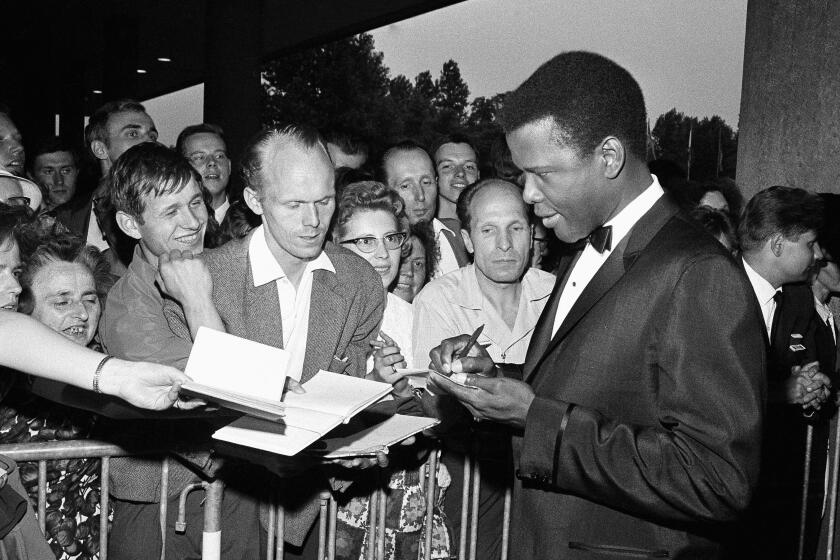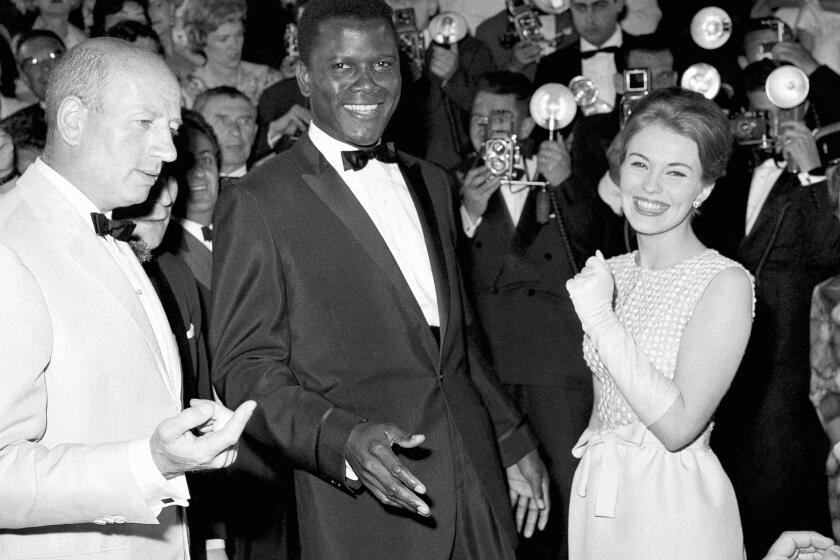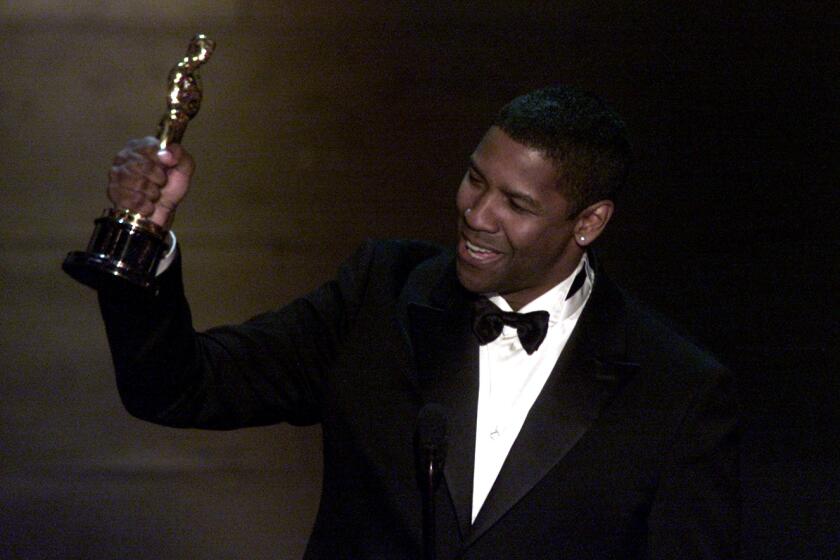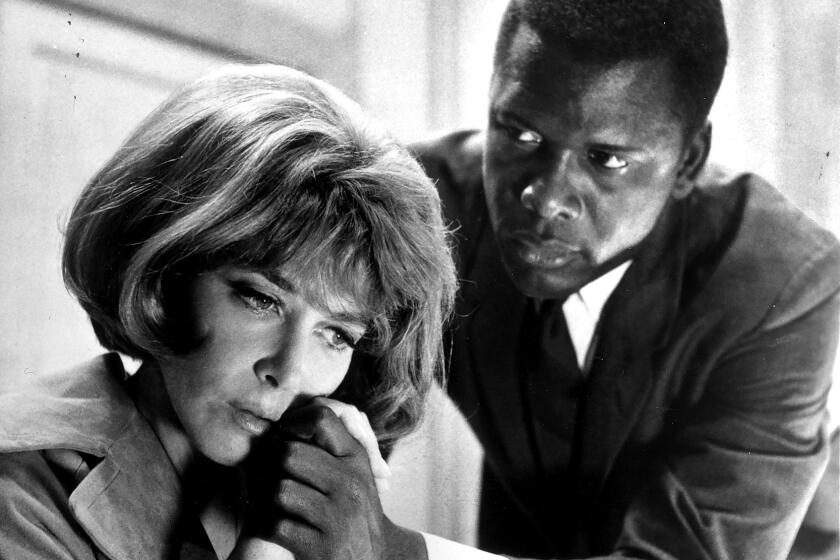Sidney Poitier was more than a symbol. He was one of the great movie stars, full stop
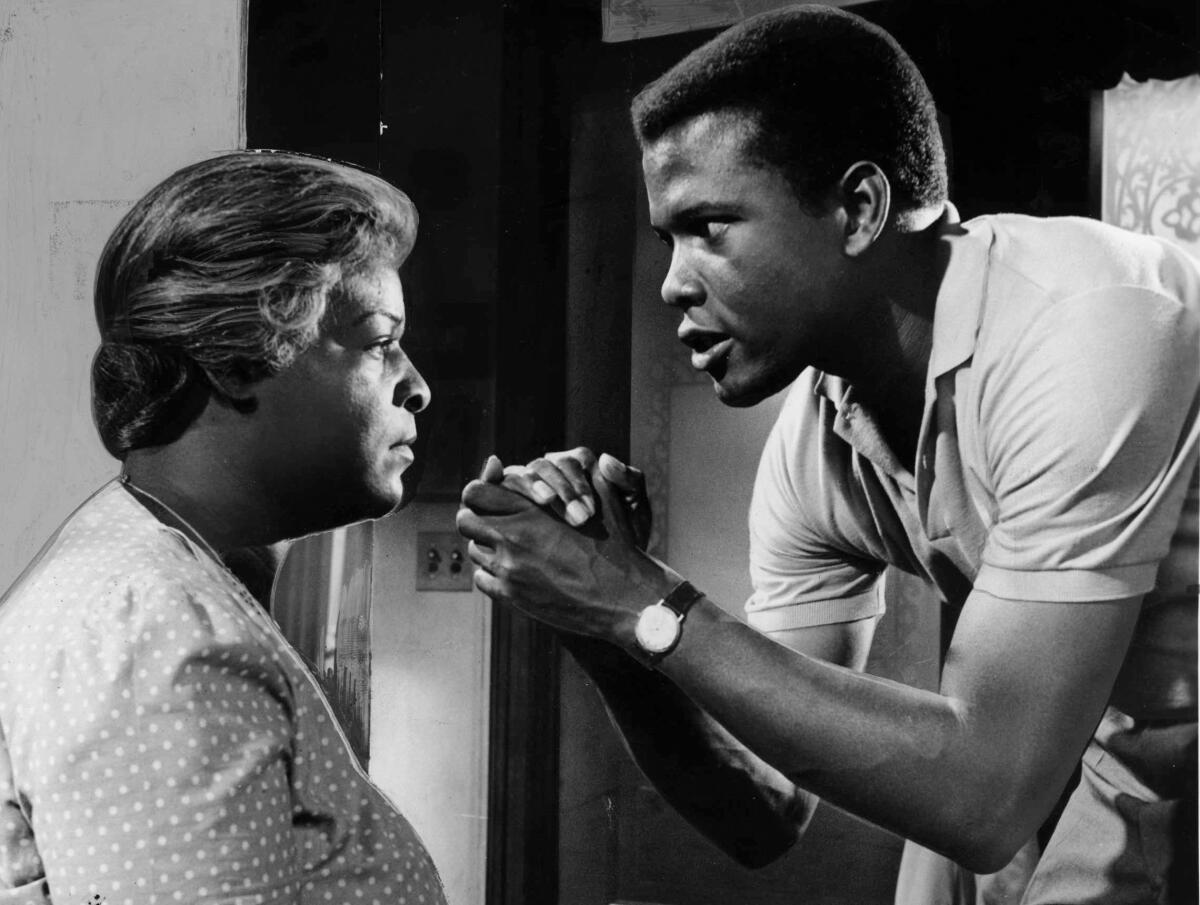
To celebrate an actor of Sidney Poitierâs greatness should require no qualifier, no asterisk, though before he died Thursday at the age of 94, a lot of people seemed eager to affix one.
Poitier was the first Black man to win an Academy Award for best actor, a blazer of representational trails that forever reshaped the landscape of American culture. His image exploded the worldâs notions of whose stories were worthy of attention, whose presence could fill a theater, who could be called a movie star. Had this Miami-born son of Bahamian tomato farmers never stumbled his way into a brilliant stage and screen career, the significantly more diverse landscape of American acting before us today â the landscape of Denzel Washington and Viola Davis and Jamie Foxx and Octavia Spencer and Mahershala Ali, to name just a few of Poitierâs fellow Oscar winners â might look markedly different.
But for too long a time, Sidney Poitier stood alone. And as he knew all too well, exceptionalism could be more burden than blessing. Even during his rise to fame in the late â50s and â60s, his career was held up as a record of limitations as well as triumphs. Too often, his critics noted, Poitier was cast as a pillar of rectitude, a figure of unimpeachable morals and manners who could gently counter â by to some extent accommodating â the virulent racism of white America. He was criticized for locking himself, or allowing himself to be locked, into the role of the upstanding Black man, who confronts even the worst bigotry with impossible poise, elegant diction and a coolly measured anger that he was always careful to restrain.
That anger could spill out, of course, and when it did, the effect was volcanic. Perhaps the most forceful example comes courtesy of Norman Jewisonâs âIn the Heat of the Nightâ (1967), when Virgil Tibbs, the police detective who would become one of Poitierâs most famous roles, returns a white racistâs slap in the face. Itâs a still-electrifying moment, the kind that can throw an entire career into sharp relief. (Itâs also a moment that Poitier himself suggested; in the original version of the script, Mr. Tibbs simply walked out.) But for many, including those who wanted Poitier to move in more confrontational directions, it wasnât enough. In their eyes, the other star-making vehicles of Poitierâs â60s heyday were liberal message movies aimed at soothing the brows of a mostly white audience.
The actor who helped break down Hollywoodâs onscreen color barriers before becoming one of the top box-office draws of the 1960s has died at 94.
He was the schoolteacher who irresistibly whips a class of rough-edged London teenagers into shape in âTo Sir, With Loveâ (1967). He was the outsider unthreatening enough to win over his white fiancĂŠeâs parents in 1968âs âGuess Whoâs Coming to Dinner.â He could be a sacrificial lamb in dramas like âEdge of the Cityâ (1957), as a dockworker who pays the ultimate price for the lowly drifter (John Cassavetes) who joins his crew. And the wanderer who finds himself waylaid, exploited and gradually charmed by German nuns in âLilies of the Fieldâ (1963), which earned Poitier that landmark Oscar. By that point he had already been nominated for 1958âs âThe Defiant Onesâ alongside his co-star, Tony Curtis; the movie, in which the two play a pair of cuffed-together prison escapees, suggests a metaphor for the shackles that, for his harshest critics, Poitier never took off.
Poitier knew those limitations better than anyone. And he found workarounds later in his career, especially by writing and directing his own films, starting with 1972âs âBuck and the Preacher,â in which he and longtime friends Harry Belafonte and Ruby Dee turned an entire history of deracinated American westerns on its head. But it took Poitier years to achieve that degree of creative control.
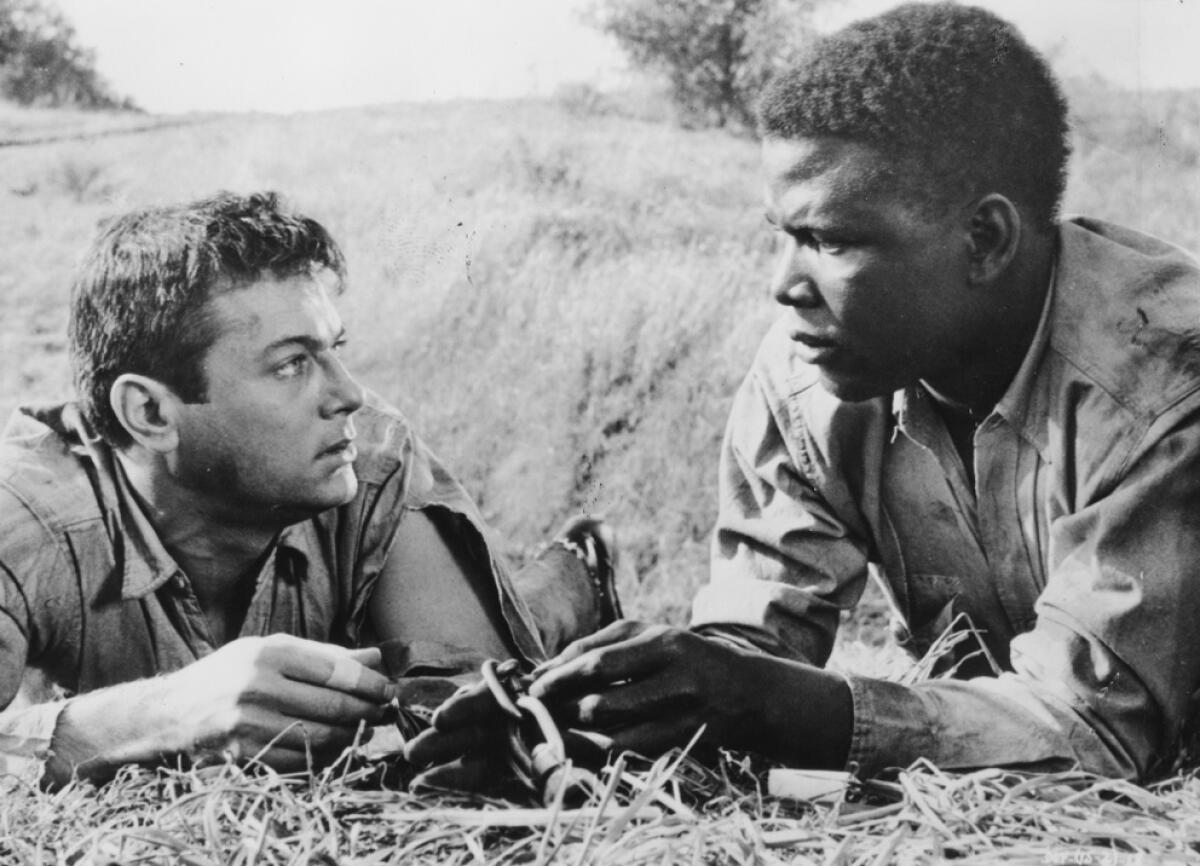
Earlier in his career, to protect his role in âThe Defiant Ones,â he grudgingly agreed to play Porgy in Samuel Goldwynâs 1959 film of âPorgy and Bess,â a part that Belafonte had turned down. Poitier often lamented how frequently he played heroes and how rarely he played villains (one exception being the 1964 adventure saga âThe Long Shipsâ). Rarely were his characters allowed to express sexual desire on screen (or to be objects of desire in turn), as evidenced by pictures like 1965âs âA Patch of Blue,â considered groundbreaking at the time for its depiction of an interracial romance.
As the film journalist Mark Harris wrote in his book âPictures at a Revolution,â Poitier âdemonstrated a remarkable instinct for self-presentation; without anyone to emulate, he knew exactly how much he could say publicly without jeopardizing his status in either black or white America.â What seems like deftness and nuance in one era, of course, can come across as timidity in another. Seen through the lens of today, with so many more examples of Black representation thankfully available, Poitierâs achievements have grown easy to dismiss as quaint relics of a less progressive era.
That assessment feels both uncharitable and more than a little self-flattering, and it reveals less about Poitier, I think, than about those who believe theirs to be the most morally courageous, politically enlightened generation that has ever existed. Certainly it says little about the emotion that Poitierâs body of work still generates, or the truths of which it still reminds us: namely, that a performance is more than a role description, and that great acting creates its own irreducible, uncategorizable energy. Poitierâs body of work is often spoken of, both rightly and reductively, as a series of historic firsts. But it also endures â gloriously, abundantly, inexhaustibly â as a wellspring of cinematic pleasure.
The late actor will be remembered for his prodigious film legacy, but Poitierâs contributions to theater should not go unforgotten.
Poitier may have played his share of symbols, but youâd rarely catch him playing a cipher. His presence was too enormous for that, his gaze too easy to get lost in, his Bahamian-accented intonations too distinctive. One of his first screen performances, in Joseph L. Mankiewiczâs âNo Way Outâ (1950), remains a personal favorite: In that nerve-jangling thriller, he plays a county hospital doctor who gets caught up in a maelstrom of criminal violence when heâs wrongly blamed for the death of a patient under his care.
The story sounds like a template for many that would follow, including âIn the Heat of the Night,â another story of a Black man whose professional authority threatens the dumber, meaner white men in his midst. But Poitierâs mesmerizing performance in âNo Way Outââ it takes talent and nerve to stare down Richard Widmark â never feels like a formulaic construct. Itâs full of repressed pain, controlled fury and a wholly understandable, deeply human fear. It also showed, even at that early stage of his career, a leading manâs fully formed charisma.
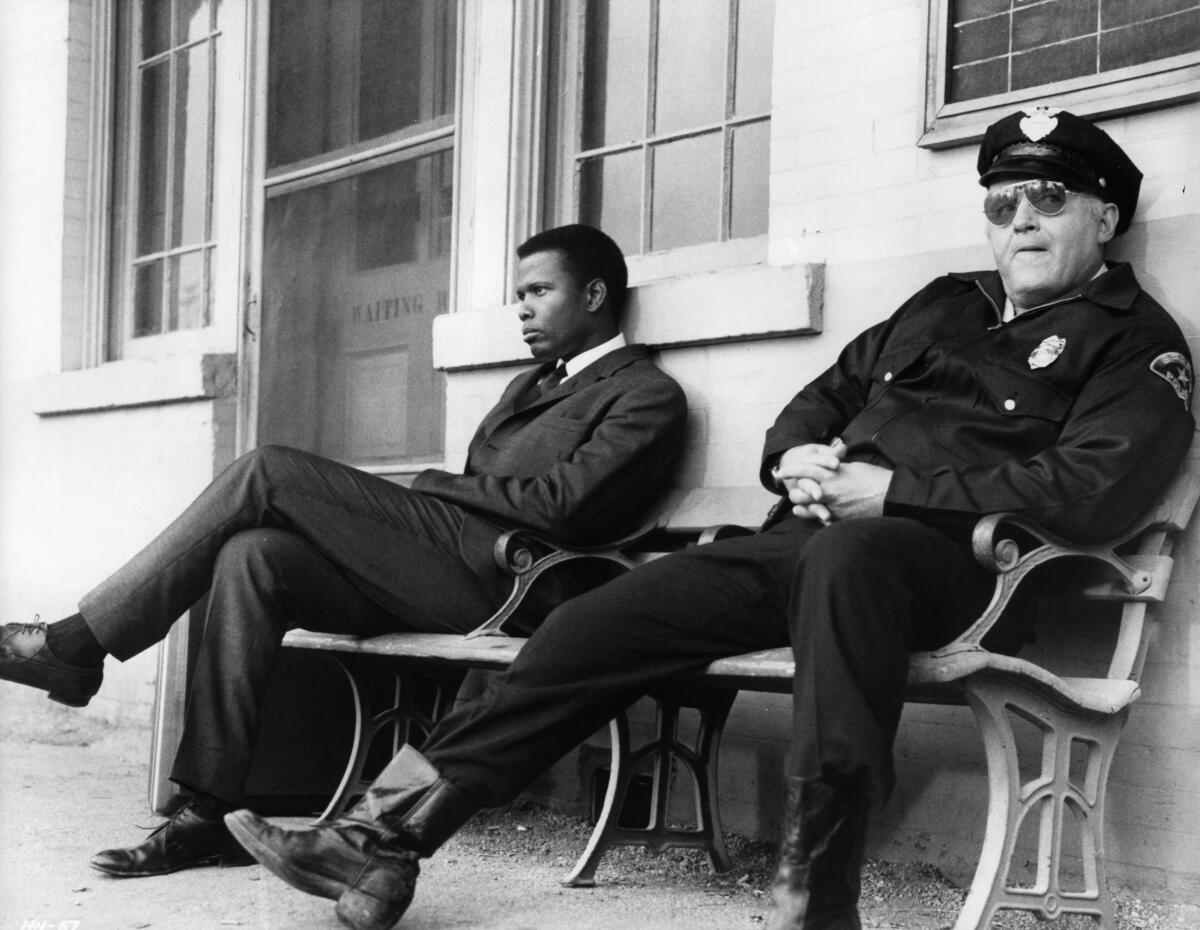
That charisma would serve him well in pictures like âA Raisin in the Sun,â the 1961 film of Lorraine Hansberryâs great play, in which he reprised a role that he had played on Broadway. As Walter Lee Younger, the passionate son, husband and father striving for better for himself and his poor Chicago family, Poitier is remarkable; the goodness that he famously exemplified is still there, but it commingles with flashes of fury, frustration, self-doubt and even self-loathing. It stands as an early rebuke to the notion of Poitier as some kind of benevolent Black balm for white souls â something that could also be said of his star-making turn in âBlackboard Jungleâ (1955), in which he essentially played the juvenile-delinquent flip side of his future role in âTo Sir, With Love.â Or perhaps âA Band of Angelsâ (1957), a less fondly remembered drama in which Poitier nonetheless stands out as an enslaved man in the American South, speaking of â and at one point acting on â his violent rage against his white oppressors.
That rage wasnât entirely an act. âIâve learned that I must find positive outlets for anger or it will destroy me,â Poitier wrote in his 2000 autobiography, âThe Measure of a Man,â reminiscing on the racism and injustice heâd both experienced and witnessed during some of his childhood trips from the Bahamas to Florida. âThere is a certain anger; it reaches such intensity that to express it fully would require homicidal rage â self-destructive, destroy-the-world rage â and its flame burns because the world is so unjust. I have to try to find a way to channel that anger to the positive, and the highest positive is forgiveness.â
Looking back at the night in 2002 when Sidney Poitier and Denzel Washington shared an unforgettable moment in Oscars history.
It would be reductive to suggest that Poitierâs career was some triumph of positivity over rage, or that he took an easy, forgiving attitude toward the industry that slowly and grudgingly made room for him. But what he wrote does explain some of the rich, complicated emotional and psychological layers you see in a Poitier performance. The anger is often there, but it isnât all thatâs there. Often itâs held in check by other qualities: playfulness, knowingness, sardonic wit, plaintive sorrow, a joy in being alive.
Consider âLilies of the Field,â a movie that plays today as both creaky and charming. It steals its way into my thoughts surprisingly often, less for its righteous message of brotherhood (or sisterhood) than for the mid-movie sequence in which Poitierâs Homer Smith first leads the nuns in a performance of the gospel song âAmen.â The sequence is designed to relieve the cross-cultural tension thatâs been building through the movie all along, though you could divorce it from its narrative context entirely and still be delighted by it.
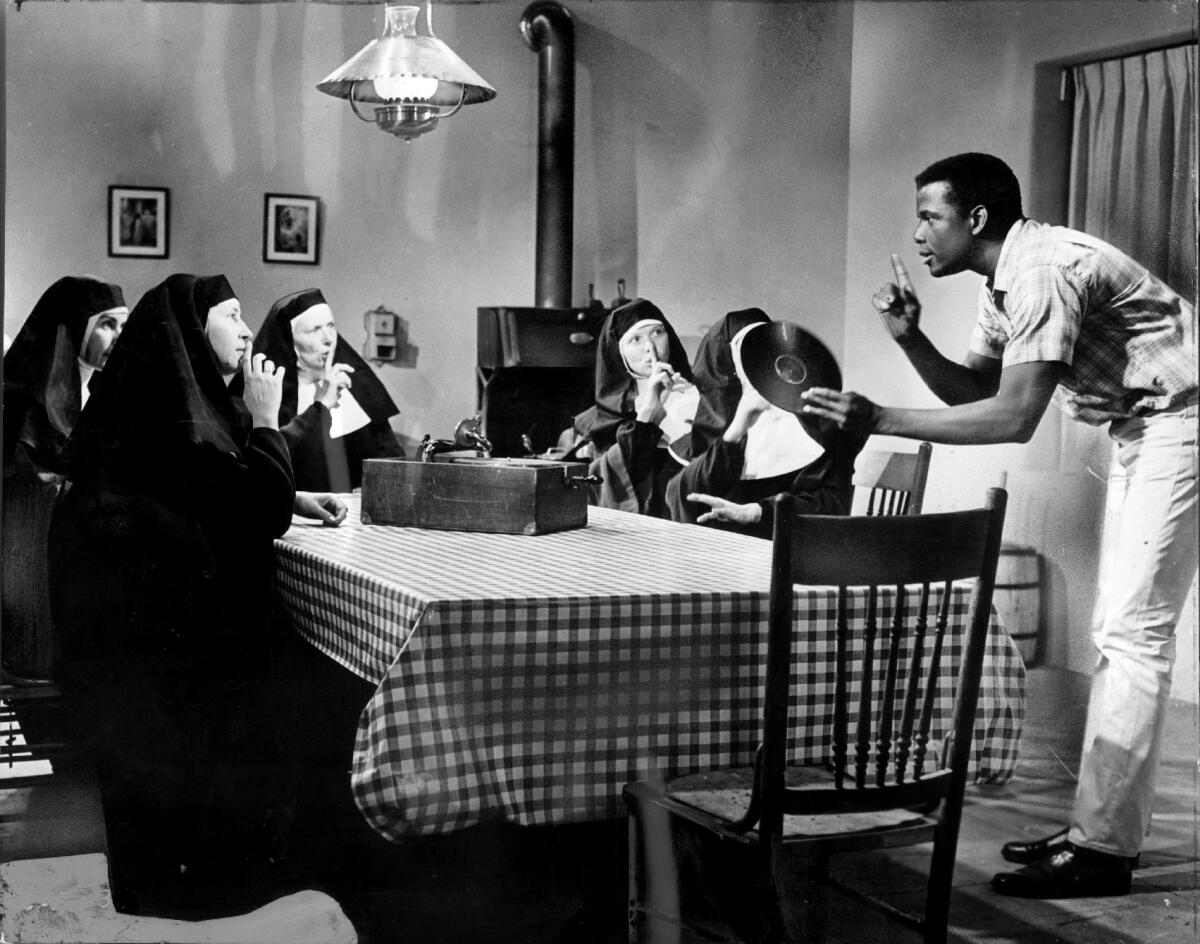
Thereâs so much exuberance in the way Homer conducts his amateur choir, setting and sometimes resetting their tempo. He sticks out his chest and pumps his arms. His voice becomes a whisper, then rises again in a âHallelujah!â crescendo. His gusto feels entirely instinctual.
Poitier seems to lose himself in this moment, and maybe he did and maybe he didnât; he was a great enough actor to keep you from telling the difference. Either way, that moment is joyous in its feeling and unconstrained physicality. This was the kind of movie Poitierâs critics dismissed as hopelessly retrograde, a trap for a legend who deserved better. But look at it from a different angle, the angle that Poitier strived throughout his career to show us, and what you see looks an awful lot like freedom.
From âA Raisin in the Sunâ to âGuess Whoâs Coming to Dinnerâ to âTo Sir, With Love,â hereâs where to stream some of Sidney Poitierâs most acclaimed movies.
More to Read
Only good movies
Get the Indie Focus newsletter, Mark Olsen's weekly guide to the world of cinema.
You may occasionally receive promotional content from the Los Angeles Times.
